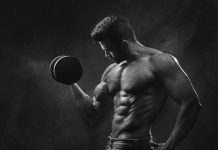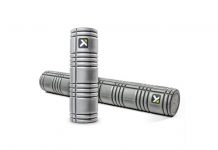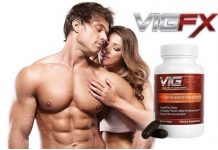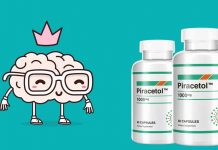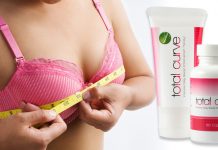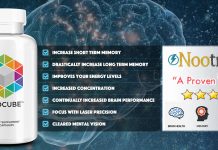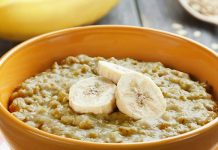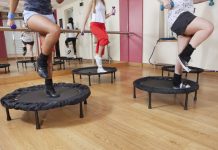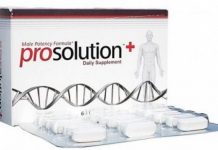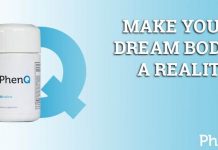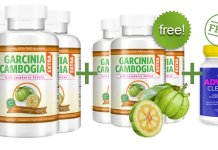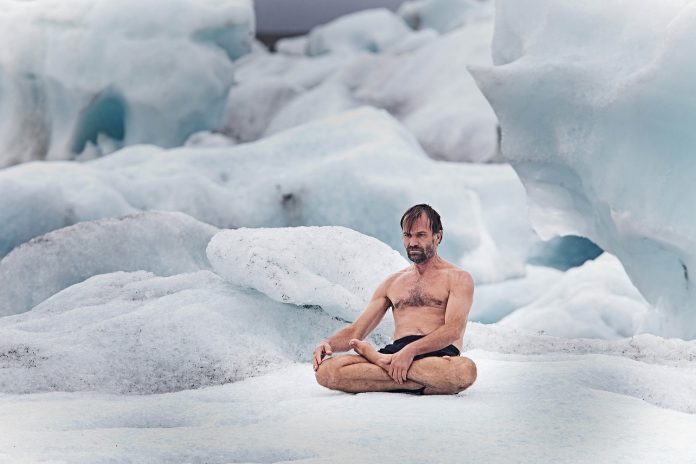
Mankind has reportedly believed in the benefits of cold therapy for millennia. In fact, many ancient civilizations were known for embracing the practice.
The war-culture of Sparta believe that complete submersion in ice baths hardened the mind and the body, and they certainly had the military success to show it.
Yet even so, the age-old practice of exposing your body in ice-cold water has been making a comeback thanks to top athletes from Tom Brady to Mo Farah to Laird Hamilton. Are these alleged benefits all pseudo-science, or is there actual research to back them up, though? Thankfully, with new advancements in modern science, we can look at the research and see for ourselves whether there really are benefits to cold therapy.
Types of Cold Therapy
While there is some preliminary evidence suggesting that cold therapy has many benefits, there’s actually multiple types of cold therapy. For the sake of scientific clarity, we must specify which we’re referring to when citing benefits and studies.
It’s generally accepted that there are four main types of cold therapy:
- Cold Showers
- Ice Baths
- Liquid Nitrogen Exposure
- Long Term Cold Weather Exposure
Ice baths, so far, have the most data to support positive benefits. There is some preliminary research to support the benefits of liquid nitrogen exposure, cold showers, and long term cold weather exposure, but more research must be conducted.
So, if you’re looking to get the most out of cold exposure, it’s suggested that you take ice baths. There’s a reason why high-performing athletes in basketball, football, baseball, and powerlifting use ice baths so frequently – they tend to have a positive recovery effect on most people.
Even so, there still needs to be more research conducted. Let’s take a look at some of the supposed benefits of cold exposure and see how they stack up with the science.
Claimed Benefits of Cold Therapy Put To Science
-
Enhanced Metabolism
It’s no secret that jumping into a cold shower will drain your body temperature faster than a freight train, but what’s not as commonly known is the effect they have on your metabolism.
Everyone is looking to lose those extra few pounds—and it turns out that taking a short cold shower may aid us in doing this.
According to one study, Scandinavian researchers discovered that long term exposure to cold temperatures caused a 15-fold increase in metabolism[1]:
“The Scandinavian researchers found that exposure to chilly temperatures caused a 15-fold increase in the metabolic rate of brown fat in their healthy adult volunteers. They figure that if a way could be found to activate the typical person’s stores of brown fat, it would burn off at least 9 pounds of regular (white) fat a year.”
According to this study, the subjects spent “2 hours in a mildly chilly room – 61 degrees Fahrenheit.” What about short term exposure to extremely cold temperatures, however? Do cold baths, or exposure to liquid nitrogen also enhance your metabolism?
Well, according to a meta-study conducted at the Department of Research and Development at S-VYASA University in India, the answer may be no[2]:
“Superficial cold application may cause physiologic reactions such as decrease in local metabolic function, local edema, nerve conduction velocity (NCV), muscle spasm, and increase in local anesthetic effects.”
“One-hour head-out water immersions (WI) in various temperatures (32°C, 20°C, and 14°C) produced various effects. Immersion at 32°C did not change metabolic rate (MR) and rectal temperature (Tre), but it lowered the heart rate (HR) by 15%, systolic blood pressure (SBP) and diastolic blood pressure (DBP) by 11% and 12%, respectively, compared, with controls at ambient air temperature. Along with HR and blood pressure (BP), the plasma renin activity, plasma cortisol, and aldosterone concentrations were also lowered by 46%, 34%, and 17%, respectively, while diuresis was increased by 107%.”
So, while long term cold exposure may lead to an increased metabolism, there doesn’t seem to be any studies confirmed that short-term, intense cold exposure (such as cold showers or ice baths) would lead to increased metabolism.
The bottom line: if you’re looking to increase your metabolism by way of cold exposure, the evidence suggests long term cold exposure is necessary. Try turning your house temperature down a few degrees or spending some extra time outdoors during the winter.
-
Increased Testosterone
The many benefits of increased testosterone are widely known by both doctors and middle-aged men alike nowadays, thanks to the internet.
But before you go ahead and consider taking testosterone replacement therapy, or jumping on some steroids, consider the benefits of cold showers first.
According to a study published in Volume 141 of Endocrinology, a globally recognized medical journal, researchers found that exposure to heat can potentially suppress both testosterone and sperm production[3]:
“The objectives of the study were to determine stage-specific changes in the kinetics of germ cell apoptosis induced by administration of exogenous testosterone (T) alone and to examine whether addition of a single testicular heat exposure would enhance the induction of germ cell apoptosis and the suppression of spermatogenesis by T.”
“Adult male rats were implanted with 3-cm SILASTIC brand capsules (Dow Corning Corp.) containing T for up to 6 weeks. Intratesticular T levels declined to 2.9% of control values by 1 week and remained suppressed at 2, 3, and 6 weeks after T administration. The incidence of germ cell apoptosis (expressed as numbers per 100 Sertoli cells) was low in control rats (0–9.52).”
So, while cold exposure may not directly increase serum testosterone levels, it’s a well-known fact that heat does suppress testosterone levels. This suggests that cryotherapy could, at the very least, indirectly lead to more testosterone production.
Are there any other studies which confirm this claim, though? Well, according to researchers at the Hyogo College of Medicine, “cold water exposure” may actually reduce testosterone[4]:
“The concentrations of testosterone (TS) and other related hormones in serum were examined before and after physical exercise with a bicycle ergometer (90 Watts, 20 min.) and a cold water stimulation in 32 19-year-old males. While exercising, the serum TS level significantly increased by 20.8% (p less than 0.05), the luteinizing hormone (LH) level by 3.6% (p less than 0.05) and noradrenaline (NA) level by 140.0% (p less than 0.01).”
“During cold water stimulation, TS decreased by 10.0%, LH increased by 22.1% and NA decreased by 23.8%. Based on changes in hormone levels within the individual during the loads. there was a significant positive correlation coefficient (r) between TS and LH, and between TS and NA, with r (TS-LH) = 0.399 (p less than 0.05) and r (TS-NA) = 0.481 (p less than 0.05) for physical exercise, while r (TS-LH) = 0.403 (p less than 0.05) and r (TS-NA) = 0.431 (p less than 0.05) for cold water stimulation, respectively. These results suggest that physical exercise increases TS level in serum by increasing LH and NA levels, but these tendencies were not found with cold water stimulation.”
The problem? This study doesn’t define “cold water stimulation” and it also measured testosterone levels of participants who had just exercised, meaning that they couldn’t isolate the cause of these changes in testosterone.
In my research, I came across numerous websites claiming that a study conducted by the “Thrombosis Research Institute of England in 1993” supposedly found that cold showers increase testosterone, but despite hours of research, I was unable to find this alleged study.
The bottom line: many pseudoscientists claim that cold showers are “proven” to increase testosterone, but the research suggests that, at best, it will only indirectly increase testosterone levels if your testicles are overheated. To get the most benefit, it may be enough to simply wear loose boxers that allow your testicles’ temperature to self-regulate.
-
Improved Circulation
There is perhaps no more important organ in the entire body than the heart. It provides nutrient-dense and oxygen-rich blood to all of those broken-down muscles that you just worked on in the gym.
It makes sense then, that anything which improves circulation would also have a whole host of other health benefits. Thankfully, one of the many benefits of cold showers is that they also improve your circulation.
According to Dr. Joseph Mercola, who runs a wildly popular natural health blog online, exposure to cold water is phenomenal for improving circulation and heart health[5]:
“On a whole-body scale, immersing yourself in a cold tub of water brings down your heart rate and increases your circulation, minimizing inflammation and helping you recover faster. In fact, cold-water baths appear to be significantly more effective than rest in relieving delayed-onset muscle soreness, which typically occurs one to four days after exercise or other physical activity.”
Despite this, some have accused Dr. Joseph Mercola of blatant pseudoscience and cherry picking to support his claims.
In fact, according to Quack Watch, Dr. Mercola was ordered to stop publishing illegal claims and lies on his website all the way back in 2005. So, can we really trust his claims? Perhaps not.
No other studies could be found supporting the claim that cold therapy improves circulation, and in fact, if anything, cold exposure would cause vasoconstriction, meaning that it would actually decrease circulation to the extremities.
The Bottom Line: there’s no evidence to suggest that cold therapy would improve circulation. If you’re looking to improve circulation, try adding 20-30 minutes of rigorous cardiovascular exercise to your workout routine, a few days a week.
-
Faster Recovery
If there’s one thing every weightlifter wants to do, it’s to speed up recovery so that you can get back in the gym to get bigger and stronger. And while many bodybuilders may turn to wacky bro science and supplements promising to cut recovery time in half, it turns out that a simple cold shower could yield impressive benefits for both amateurs and professionals alike.
According to one meta-study, which analyzed 17 trials involving over 360 people who were exposed to cold water after resistance raining, cycling, or running, exposure to cold water post-workout is incredibly effective at relieving sore muscles[6]:
“Delayed onset muscle soreness commonly results after sports and exercise activity. Cold-water immersion (CWI), which involves people immersing themselves in water at temperatures of less than 15°C, is sometimes used to manage muscle soreness after exercise and to speed up recovery time.”
“Our review included 17 small trials, involving a total of 366 participants. Study quality was low. Fourteen trials compared cold-water immersion applied after exercise with ‘passive’ treatment involving rest or no treatment. The temperature, duration and frequency of cold-water immersion varied between the different trials as did the exercises and settings. There was some evidence that cold-water immersion reduces muscle soreness at 24, 48, 72 and even at 96 hours after exercise compared with ‘passive’ treatment.”
In addition to this, Dr. Rhonda Patrick, who’s on the cutting edge of anti-aging science, recently said in an interview that cold showers have also been proven to decrease recovery time, especially in athletes who are known for overtraining:
“This has been shown with cryotherapy… that if you do cryotherapy immediately after very strenuous exercise… what they found was that there was less tissue damage.”
She also states that cryotherapy, specifically short exposure to extremely cold temperatures, has a very powerful anti-inflammatory effect on your body.
We all love to train, but the problem comes when your body builds up an excess of damaging, inflammatory proteins called cytokines. According to research, cold exposure can be particularly useful in mitigating the effects of these damaging proteins.
The Bottom Line: cold showers, ice baths, and cryotherapy (liquid nitrogen exposure) have all been shown to radically decrease recovery time, by means of reducing inflammation. So if you’re a particularly hard-working athlete, you may want to consider doing some cold therapy immediately after your strenuous workouts to gain the most benefit.
-
Relieves Depression
Many people get into lifting weights to help lessen the symptoms of depression—and while exercise is certainly a potent endorphin-booster, sometimes we need a little something extra to get us through the day’s stresses.
That’s where cold showers come in. According to one 2008 study conducted by Virginia Commonwealth University’s Department of Radiation Oncology, cold showers may serve as a potential treatment for depressive disorders[7]:
“The following evidence appears to support the hypothesis: Exposure to cold is known to activate the sympathetic nervous system and increase the blood level of beta-endorphin and noradrenaline and to increase synaptic release of noradrenaline in the brain as well. Additionally, due to the high density of cold receptors in the skin, a cold shower is expected to send an overwhelming amount of electrical impulses from peripheral nerve endings to the brain, which could result in an anti-depressive effect.”
“Practical testing by a statistically insignificant number of people, who did not have sufficient symptoms to be diagnosed with depression, showed that the cold hydrotherapy can relieve depressive symptoms rather effectively. The therapy was also found to have a significant analgesic effect and it does not appear to have noticeable side effects or cause dependence.”
This study has been cited 37 times, showing a high level of faith from other researchers. Even so, there have been very few studies done on this topic matter. All in all, we need more research done on how cold therapy affects depression.
Even so, depression is theorized to have numerous causes – one of which is inflammation in the brain. So theoretically, cold therapy may help with depression if your depression is caused by excess inflammation. Still, be sure to consult with a licensed medical official.
The Bottom Line: while there’s some research showing that cold therapy may help fight depression, more needs to be done. Still, taking a cold shower certainly can’t hurt, and has a whole host of other hormonal and anti-inflammatory benefits.
Is Cold Therapy Worth It?
In conclusion, cold showers have a plethora of benefits for bodybuilders, athletes, and average non-lifters alike. While many of these benefits may require more testing and research to fully verify, there’s a strong body of preliminary evidence to suggest these benefits, and many more, can come from taking regular cold showers.
The strongest body of research suggests that the primary benefit is in fighting excess cytokines, which can lead to high levels of inflammation. Just this benefit alone is enough to warrant further research, which is certainly needed on some of the other claims.
Ice baths have the most amount of research backing their benefits, but that doesn’t mean you can’t gain benefits from other forms of cold therapy. Even a cold shower here and there, especially post-workout, can help decrease inflammation drastically and improve recovery time, particularly in professional athletes and heavy gym-goers.
Also consider turning down the temperature in your house by a few degrees if you want to increase your metabolism. This may also boost in helping to boost your testosterone, but the quickest and easiest way to do so would simply to be by wearing loose-fitting underwear, which allow your testes to self-regulate their temperature.
The bottom line is that athletes use ice baths post-workout for a reason: they’ve been shown to drastically reduce recovery time and have a whole host of hormonal benefits as well. They activate the sympathetic nervous system, which increases beta-endorphin and noradrenaline, leading to feelings of well-being and reduced stress.
So, the next time you’re thinking about turning that knob all the way to the left and indulging in a steamy-hot shower, consider ending it with a couple minutes of ice cold water. It certainly may not be pleasant, but in the long run a little bit of discomfort can go a long way to creating a better life and having better health.
References
- Knox, R. (2018). NPR Choice page. [online] Npr.org. Available at: https://www.npr.org/templates/story/story.php?storyId=102964807 [Accessed 11 Sep. 2018].
- Mooventhan, A. and Nivethitha, L. (2014). Scientific evidence-based effects of hydrotherapy on various systems of the body. [online] Pub Med. Available at: https://www.ncbi.nlm.nih.gov/pmc/articles/PMC4049052/ [Accessed 13 Sep. 2018].
- Lue, Y., Sinha Hikim, A., Wang, C., Im, M., Leung, A. and Swerdloff, R. (2018). Testicular Heat Exposure Enhances the Suppression of Spermatogenesis by Testosterone in Rats: The “Two-Hit” Approach to Male Contraceptive Development1. [online] Oxford Academic Endocrinology. Available at: https://academic.oup.com/endo/article/141/4/1414/2988074 [Accessed 11 Sep. 2018].
- Sakamoto, K., Katsuno, S., Yoshimoto, S., Wakabayashi, I. and Masui, H. (1991). Effects of physical exercise and cold stimulation on serum testosterone level in men. – PubMed – NCBI. [online] NCBI. Available at: https://www.ncbi.nlm.nih.gov/pubmed/1890772 [Accessed 13 Sep. 2018].
- Mercola, J. (2018). A Cold Shower May Be More Beneficial to Your Health. [online] Mercola.com. Available at: https://fitness.mercola.com/sites/fitness/archive/2012/04/27/cold-water-immersion-benefits.aspx [Accessed 11 Sep. 2018].
- Bleakley, C., McDonough, S., Gardner, E., Baxter, G., Hopkins, J. and Davison, G. (2018). Cold-water immersion (cryotherapy) for preventing and treating muscle soreness after exercise. [online] PubMed Health. Available at: https://www.ncbi.nlm.nih.gov/pubmedhealth/PMH0033934/ [Accessed 11 Sep. 2018].
- NA, S. (2018). Adapted cold shower as a potential treatment for depression. – PubMed – NCBI. [online] PubMed. Available at: https://www.ncbi.nlm.nih.gov/pubmed/17993252 [Accessed 11 Sep. 2018].
Biography
Jon Anthony created Masculine Development in 2015 and routinely blogs about all topics related to men’s self-improvement, from dating advice to bodybuilding and investing tips. He has been working out for almost a decade now, and enjoys researching ways to improve recovery, build muscle faster, and lose weight as efficiently as possible. He is especially interested in bio-hacking, and developments in the anti-aging community. Jon also currently has three products available for purchase, which can be found at his website.

